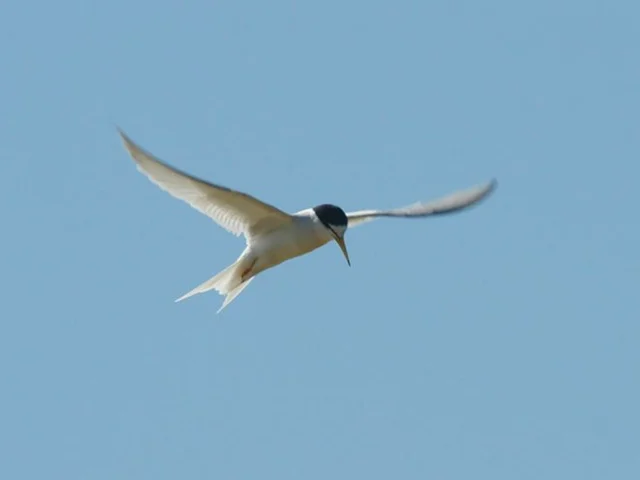Little Tern’s mixed fortunes

A new end-of-season report highlights some promising signs for Britain’s Little Terns despite a difficult 2015, the RSPB has announced.
Numbers of breeding Little Terns – Britain’s smallest tern species and one of our rarest seabirds – have fallen by 15 per cent since last year, according to the latest figures from the RSPB. Staff working for a LIFE-funded Little Tern Project monitoring the species’ breeding behaviour have watched a complex season unfold, with ups and downs being recorded across England and Wales.
To understand more about Britain’s Little Tern population, a co-ordinated count of colonies in England and Wales was carried out. The first count in June confirmed fears of a poor start to the breeding season. The species endured some of the toughest conditions during April and May, when it faced cool and windy weather, as well as a lack of suitable small fish on returning to our shores from wintering grounds in West Africa.
A number of birds abandoned their colonies, with Langstone Harbour on the south coast losing 31 of 36 nests and the first breeding attempts failing at Crimdon Dene, Co Durham. At Winterton, Norfolk, usually a stronghold for the Amber-listed species, more than 80 nests were abandoned. Norfolk counts as a whole were down 57 per cent compared to June 2014.

Breeding attempts at the Little Tern colony at Crimdon Dene, Co Durham, failed in 2015
due to bad weather. Photo by Peter Robinson (commons.wikimedia.org, CC BY-SA 2.0).
It’s not all bad news, though. Highlights include Little Terns found nesting at three former sites not used for a number of years; a promising step towards one of the LIFE project objectives to restore former colonies and expand the current breeding range. Other colonies were also doing better, with the number of pairs at Spurn, North Yorkshire, and Gibraltar Point, Lincolnshire, above their recent five-year average. Warmer weather and improved food availability helped several colonies to build up through early July – much later than normal– and many chicks reached fledgling stage.
Susan Rendell-Read, LIFE Project Manager, said: “Although breeding numbers are down from last year and the five-year trend before that, a difficult season could have been a lot worse if it wasn’t for the hard work of the many rangers, wardens and volunteers on our national beaches protecting Little Terns.”

